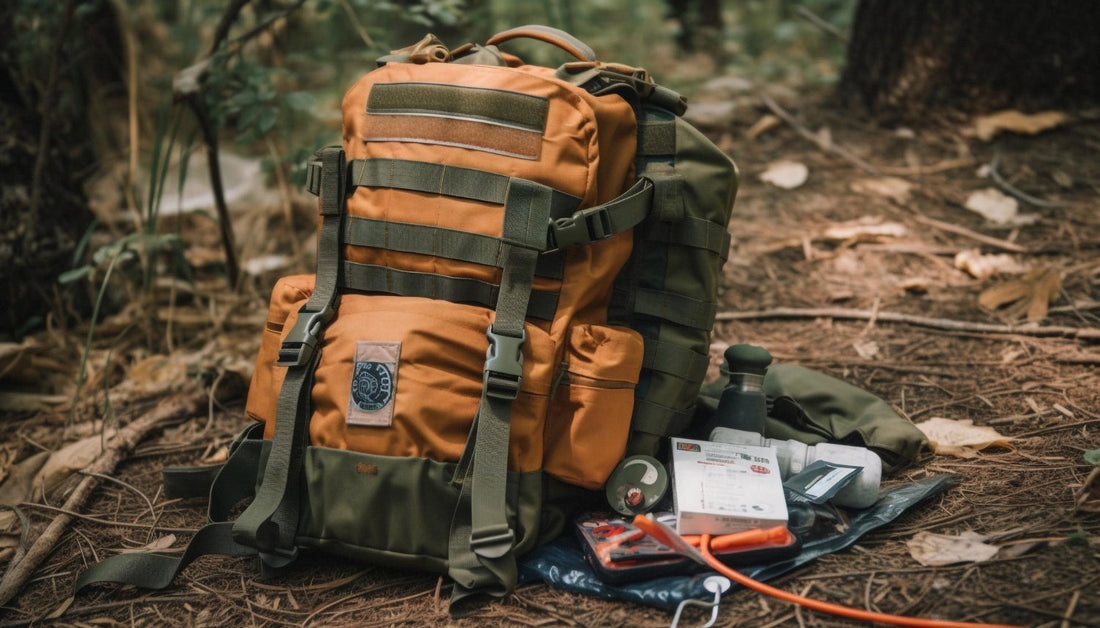
Advanced Survival Guide: Thriving in Extreme Situations
Share
Survival is not just about making it through the first 72 hours of an emergency; it's about adapting, overcoming challenges, and thriving in extreme situations. Whether you're facing a natural disaster, long-term societal collapse, or an unexpected crisis, this guide will equip you with advanced survival tactics, skills, and strategies to ensure long-term survival.
1. Advanced Survival Kit: Beyond the Basics
Your standard survival kit covers the first 72 hours, but for extended survival, you need to upgrade your gear. Here’s what to add:
1.1 Tactical Gear Enhancements
-
Survival Knife (Full Tang, High Carbon Steel) – Stronger and more durable.
-
Multi-Tool (Leatherman, Gerber) – For repairs and various survival tasks.
-
Collapsible Bow & Arrows – Silent hunting and self-defense option.
-
Night Vision Goggles – Essential for night movement and security.
-
Solar Power Bank & Foldable Solar Panels – Keeps devices charged indefinitely.
1.2 Food & Water Upgrades
-
Portable Desalination Device – For coastal survival scenarios.
-
Edible Wild Plant Identification Guide – Crucial for foraging.
-
Hunting/Fishing Equipment – Slingshot, compact fishing rod, snares.
-
MREs & Long-Term Dehydrated Food (25+ Years Shelf Life) – Sustainable nutrition.
-
Clay Pot Refrigeration (Zeer Pot) – DIY cooling for food preservation.
2. Off-Grid Survival: Living Without Modern Infrastructure
If the grid goes down permanently, you need to transition to a self-sufficient lifestyle.
2.1 Water Collection & Purification
-
DIY Rainwater Harvesting System – Collect, filter, and store rainwater.
-
Solar Still – Uses sun power to extract clean water from saltwater or contaminated sources.
-
Aquaponics & Hydroponics – Self-sustaining food and water purification system.
2.2 Energy Independence
-
Hydroelectric Generator – Uses river flow to generate energy.
-
Wood Gasifier Stove – Converts wood into combustible gas for cooking.
-
Wind Turbine (DIY or Purchased) – Harnesses wind energy for power.
3. Advanced Shelter Building
3.1 Choosing the Right Location
-
Defensible Position – High ground with visibility.
-
Near a Fresh Water Source – Access to drinking and irrigation water.
-
Camouflaged & Hidden – Avoid attracting attention.
3.2 Building Techniques
-
Earthbag Homes – Strong, durable, and bullet-resistant shelters.
-
Underground Bunkers – Protection from nuclear fallout, extreme weather, and intruders.
-
Super Shelter Method (Heat Reflection Tarp + Insulation) – Keeps warmth in and cold out.
4. Wilderness Survival: Mastering Nature
If you’re forced to survive in the wilderness, knowing these skills is crucial.
4.1 Finding Food in the Wild
-
Tracking & Hunting Small Game – Understanding animal patterns.
-
Fishing Without a Rod – Using nets, spears, and improvised traps.
-
Wild Edibles & Poisonous Plants Identification – Avoid deadly mistakes.
4.2 Navigation Without GPS
-
Celestial Navigation – Using the sun and stars to determine direction.
-
Natural Landmark Navigation – Recognizing terrain markers.
-
Dead Reckoning – Estimating location by calculating speed and time traveled.
5. Survival Psychology & Mindset
Mental resilience can be the key to life or death in extreme situations.
5.1 Overcoming Fear & Panic
-
Tactical Breathing – Controls adrenaline and stress.
-
Routine & Discipline – Establish a daily survival schedule.
-
Situational Awareness Drills – Enhances instinctive survival reactions.
5.2 Staying Motivated & Avoiding Mental Fatigue
-
Micro-Goals – Small victories keep morale high.
-
Social Connections – Building a survival group increases chances of long-term success.
-
Mindful Focus – Staying present reduces overwhelming stress.
6. Advanced Self-Defense & Security
6.1 Fortifying Your Shelter
-
Perimeter Traps & Warning Systems – Protect against intruders.
-
Barriers & Booby Traps – Defensive layers to deter threats.
-
Silent Alarms (Trip Wires & Motion Sensors) – Advanced alert systems.
6.2 Weapons & Combat Training
-
Improvised Weapons – Using everyday items for defense.
-
Hand-to-Hand Combat – Basic Krav Maga or Brazilian Jiu-Jitsu.
-
Camouflage & Evasion – Avoid detection when necessary.
7. Bartering & Community Survival
If society collapses, currency may become worthless. Bartering will be the new economy.
7.1 Best Barter Items
-
Medical Supplies (Antibiotics, Bandages, Painkillers) – Always in demand.
-
Ammunition & Weapons – Critical for protection and hunting.
-
Alcohol & Tobacco – High-value trade items.
-
Seeds & Farming Equipment – For long-term sustainability.
-
Batteries & Solar Chargers – Power will be a premium commodity.
7.2 Building a Survival Community
-
Skill Sharing (Blacksmithing, Medical, Engineering) – Every group needs a mix of skills.
-
Trust & Security Protocols – Establishing group rules.
-
Defense Planning – Organizing community watch and security rotations.
8. Long-Term Survival: Thriving, Not Just Surviving
8.1 Rebuilding & Self-Sustainability
-
Permaculture Farming – Sustainable agriculture techniques.
-
Animal Husbandry – Raising chickens, goats, and rabbits for food.
-
DIY Medicine Production – Herbal remedies and makeshift antibiotics.
8.2 Reintroducing Civilization Elements
-
Basic Metalworking & Tool Making – Rebuilding industry.
-
Renewable Resources – Establishing long-term energy solutions.
-
Education & Knowledge Transfer – Keeping intelligence alive for future generations.
The Will to Survive
Survival is more than just gear and skills; it’s about adaptability, resourcefulness, and determination. The more you prepare now, the higher your chances of not only surviving a crisis but thriving in it.
Take Action Now!
-
Start practicing one new survival skill every month.
-
Build long-term food and water storage.
-
Form a local network of like-minded survivalists.
-
Test your off-grid living capabilities for a weekend.
The best time to prepare was yesterday. The next best time is now!
📌 Get Ready Today! Explore our premium survival kits and gear to prepare for anything that comes your way.
